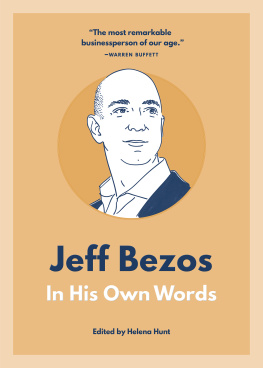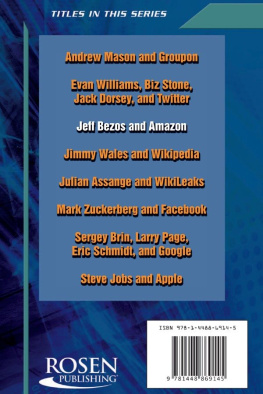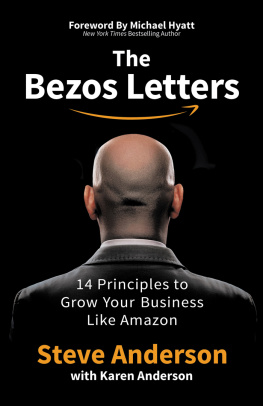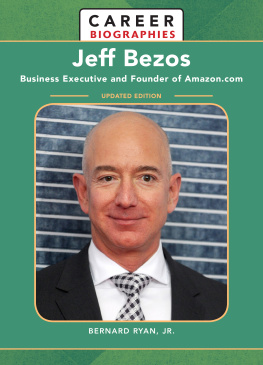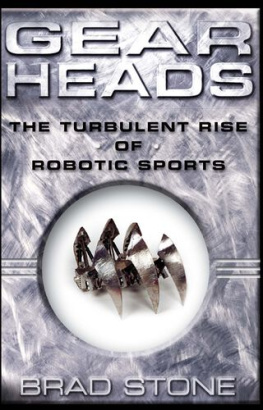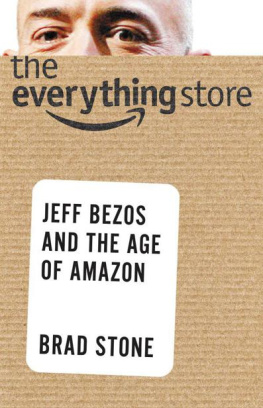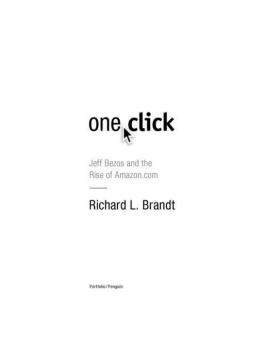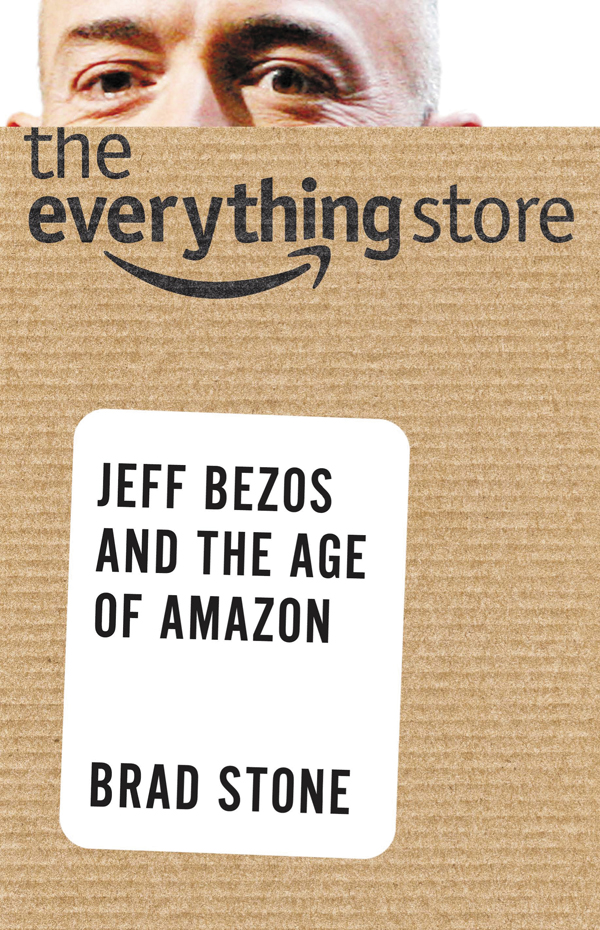
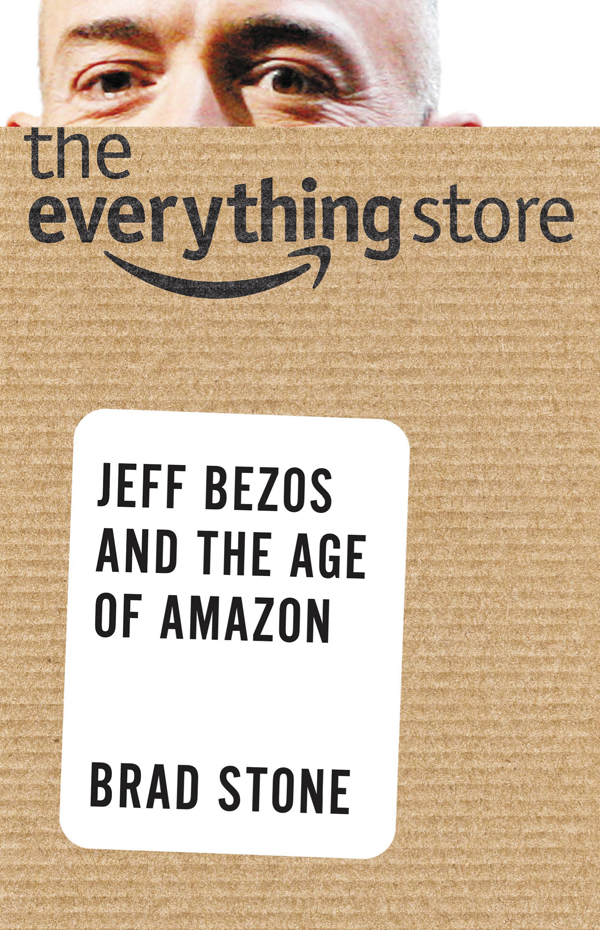
In accordance with the U.S. Copyright Act of 1976, the scanning, uploading, and electronic sharing of any part of this book without the permission of the publisher is unlawful piracy and theft of the authors intellectual property. If you would like to use material from the book (other than for review purposes), prior written permission must be obtained by contacting the publisher at permissions@hbgusa.com. Thank you for your support of the authors rights.
Thank you for buying this ebook, published by Hachette Digital.
To receive special offers, bonus content, and news about our latest ebooks and apps, sign up for our newsletters.
Sign Up
Or visit us at hachettebookgroup.com/newsletters
For more about this book and author, visit Bookish.com.
Copyright 2013 by Brad Stone
All rights reserved. In accordance with the U.S. Copyright Act of 1976, the scanning, uploading, and electronic sharing of any part of this book without the permission of the publisher is unlawful piracy and theft of the authors intellectual property. If you would like to use material from the book (other than for review purposes), prior written permission must be obtained by contacting the publisher at permissions@hbgusa.com. Thank you for your support of the authors rights.
Little, Brown and Company
Hachette Book Group
237 Park Avenue, New York, NY 10017
littlebrown.com
twitter.com/littlebrown
facebook.com/littlebrownandcompany
First ebook edition: October 2013
Little, Brown and Company is a division of Hachette Book Group, Inc. The Little, Brown name and logo are trademarks of Hachette Book Group, Inc.
The Hachette Speakers Bureau provides a wide range of authors for speaking events. To find out more, go to hachettespeakersbureau.com or call (866) 376-6591.
The publisher is not responsible for websites (or their content) that are not owned by the publisher.
ISBN 978-0-316-21925-9
For Isabella and Calista Stone
When you are eighty years old, and in a quiet moment of reflection narrating for only yourself the most personal version of your life story, the telling that will be most compact and meaningful will be the series of choices you have made. In the end, we are our choices.
Jeff Bezos, commencement speech at Princeton University, May 30, 2010
In the early 1970s, an industrious advertising executive named Julie Ray became fascinated with an unconventional public-school program for gifted children in Houston, Texas. Her son was among the first students enrolled in what would later be called the Vanguard program, which stoked creativity and independence in its students and nurtured expansive, outside-the-box thinking. Ray grew so enamored with the curriculum and the community of enthusiastic teachers and parents that she set out to research similar schools around the state with an eye toward writing a book about Texass fledgling gifted-education movement.
A few years later, after her son had moved on to junior high, Ray returned to tour the program, nestled in a wing of River Oaks Elementary School, west of downtown Houston. The schools principal chose a student to accompany her on the visit, an articulate, sandy-haired sixth-grader whose parents asked only that his real name not be used in print. So Ray called him Tim.
Tim, Julie Ray wrote in her book Turning On Bright Minds: A Parent Looks at Gifted Education in Texas, was a student of general intellectual excellence, slight of build, friendly but serious. He was not particularly gifted in leadership, according to his teachers, but he moved confidently among his peers and articulately extolled the virtues of the novel he was reading at the time, J. R. R. Tolkiens The Hobbit.
Tim, twelve, was already competitive. He told Ray he was reading a variety of books to qualify for a special readers certificate but compared himself unfavorably to another classmate who claimed, improbably, that she was reading a dozen books a week. Tim also showed Ray a science project he was working on called an infinity cube, a battery-powered contraption with rotating mirrors that created the optical illusion of an endless tunnel. Tim modeled the device after one he had seen in a store. That one cost twenty-two dollars, but mine was cheaper, he told Ray. Teachers said that three of Tims projects were being entered in a local science competition that drew most of its submissions from students in junior and senior high schools.
The school faculty praised Tims ingenuity, but one can imagine they were wary of his intellect. To practice tabulating statistics for math class, Tim had developed a survey to evaluate the sixth-grade teachers. The goal, he said, was to assess instructors on how they teach, not as a popularity contest. He administered the survey to classmates and at the time of the tour was in the process of calculating the results and graphing the relative performance of each teacher.
Tims average day, as Ray described it, was packed. He woke early and caught a seven oclock bus a block from home. He arrived at school after a twenty-mile ride and went through a blaze of classes devoted to math, reading, physical education, science, Spanish, and art. There was time reserved for individual projects and small group discussions. In one lesson Julie Ray described, seven students, including Tim, sat in a tight circle in the principals office for an exercise called productive thinking. They were given brief stories to read quietly to themselves and then discuss. The first story involved archaeologists who returned after an expedition and announced they had discovered a cache of precious artifacts, a claim that later turned out to be fraudulent. Ray recorded snippets of the ensuing dialogue:
They probably wanted to become famous. They wished away the things they didnt want to face.
Some people go through life thinking like they always have.
You should be patient. Analyze what you have to work with.
Tim told Julie Ray that he loved these exercises. The way the world is, you know, someone could tell you to press the button. You have to be able to think what youre doing for yourself.
Ray found it impossible to interest a publisher in Turning On Bright Minds. Editors at the big houses said the subject matter was too narrow. So, in 1977, she took the money shed earned from writing advertising copy for a Christmas catalog, printed a thousand paperbacks, and distributed them herself.
More than thirty years later, I found a copy in the Houston Public Library. I also tracked down Julie Ray, who now lives in Central Texas and works on planning and communications for environmental and cultural causes. She said she had watched Tims rise to fame and fortune over the past two decades with admiration and amazement but without much surprise. When I met him as a young boy, his ability was obvious, and it was being nurtured and encouraged by the new program, she says. The program also benefited by his responsiveness and enthusiasm for learning. It was a total validation of the concept.
She recalls what one teacher said all those years ago when Ray asked her to estimate the grade level the boy was performing at. I really cant say, the teacher replied. Except that there is probably no limit to what he can do, given a little guidance.
Next page


